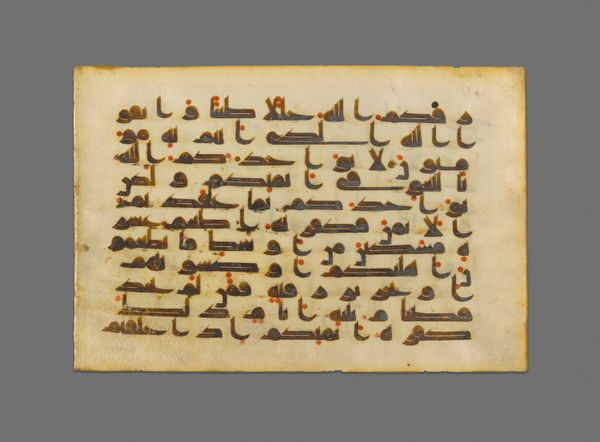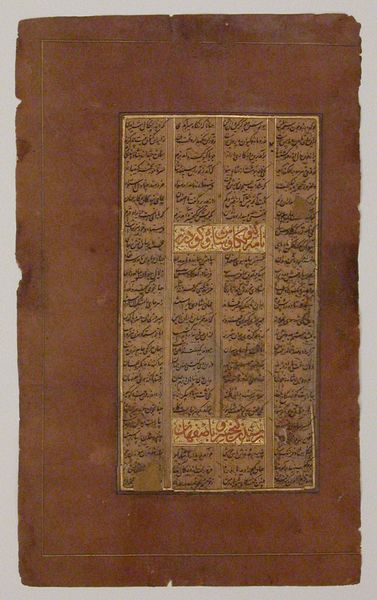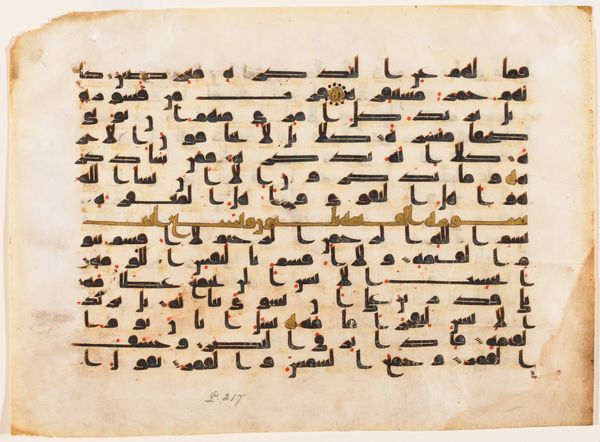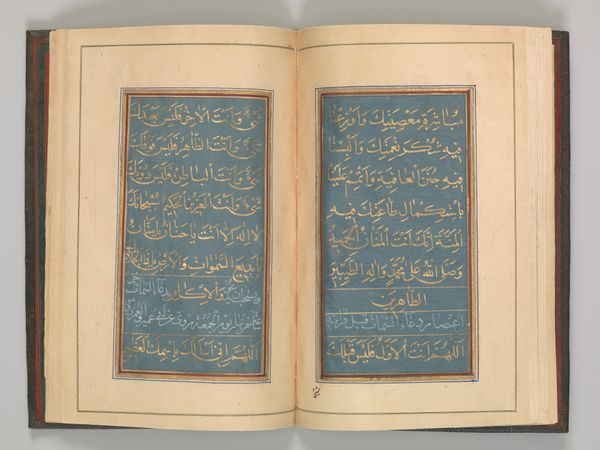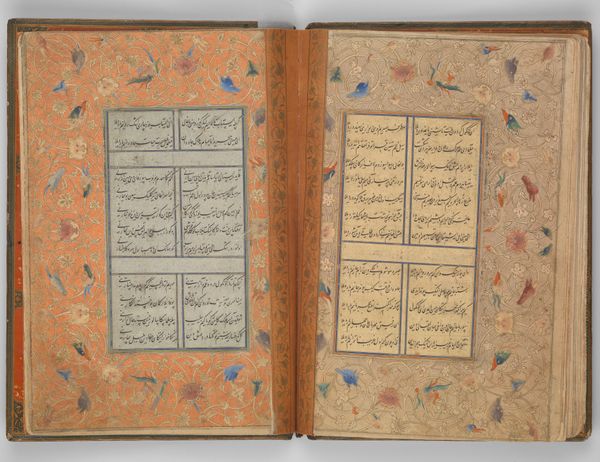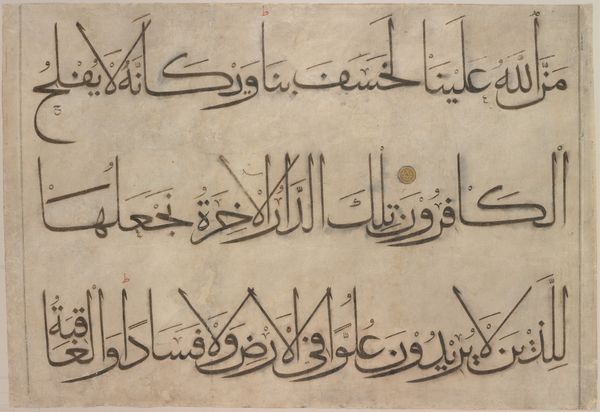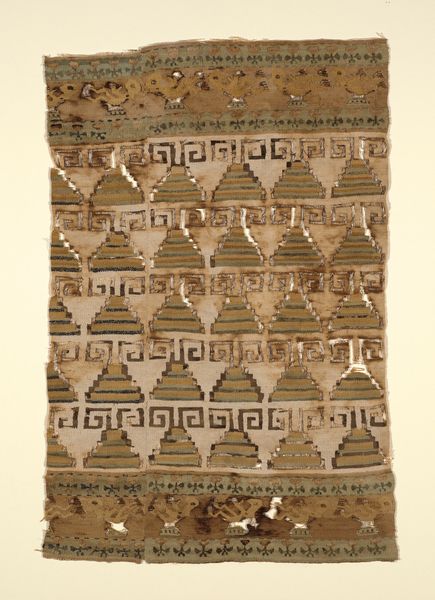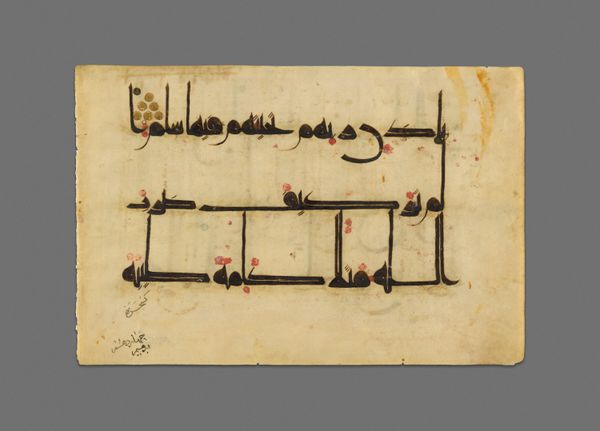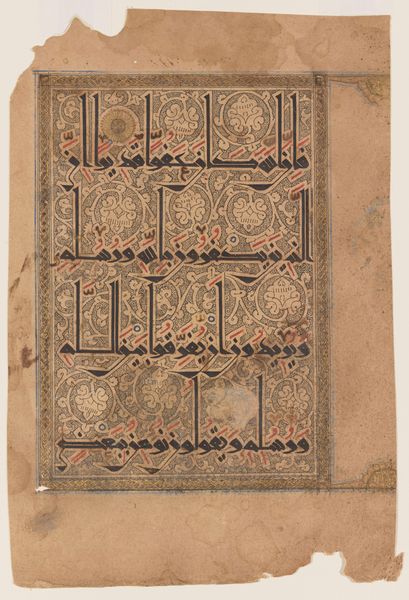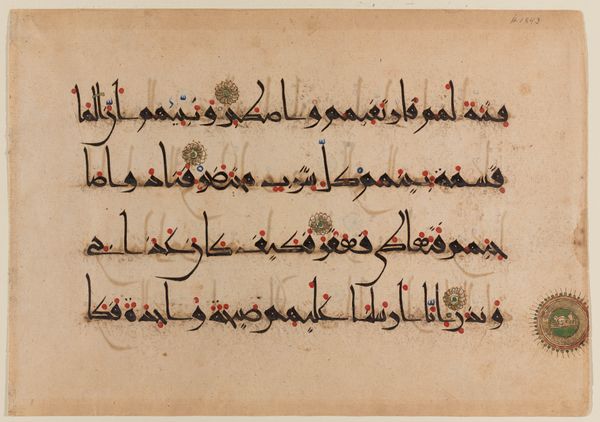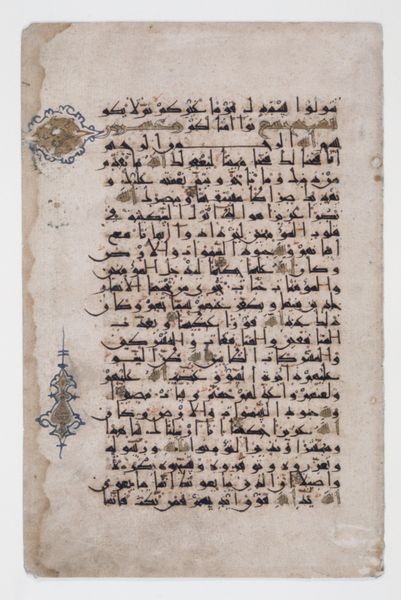
#
water colours
#
rough brush stroke
#
typeface
#
small typography
#
possibly oil pastel
#
carved into stone
#
watercolour bleed
#
white font
#
mixed medium
#
watercolor
Dimensions: 4 11/16 × 14 1/16 in. (11.9 × 35.7 cm)
Copyright: Public Domain
Curator: Looking at this page, it feels so ancient, doesn't it? It is a fragment from the Koran, dating back to the 9th or 10th century, and it's currently housed at the Minneapolis Institute of Art. Editor: The fragility of the paper, almost crumbling at the edges, coupled with the rhythmic dance of the Arabic calligraphy, creates an impression of both profound serenity and immense age. What stories this page could tell. Curator: Exactly! I wonder what kind of person created it. When I observe its lines and curves, and especially the tiny variations in thickness and the slight imperfections—do you see them too?—I am almost physically connecting with that unknown scribe. I love these whispers of humanity, don’t you? Editor: Absolutely. The calligraphic form itself isn't just about transmitting religious text, but becomes an act of devotion, a meticulous labor meant to visually manifest the divine. We must remember that literacy itself would have been power, access only available to an elite few. What decisions were at play regarding its patronage and use? Curator: That’s a good point. How it was used also crosses my mind. Did it ever happen to soothe someone? Was it on a battlefield, giving courage? Was it consulted at coronations or funerals? Think of how this artwork transcends mere aesthetics; it turns into a conduit through history and collective memory. Editor: Yes. This wasn't passively "art" for the wall. Objects like these circulated within complex networks of power, knowledge, and faith, with the artistic labor contributing directly to their perceived spiritual efficacy. The art of calligraphy here wasn’t only decorative; it fortified the authority of religious discourse. Curator: Thank you for contextualizing the artwork so clearly, I got carried away by the beautiful letters. I now realize that the script isn't only elegant, it’s symbolic of a world of intricate relationships. Editor: Art invites us to see both its intrinsic beauty and to also ponder on the narratives embedded inside and around it, so that it may reveal a clearer mirror for us to consider not just how cultures make beauty, but what purposes that art serves.
Comments
No comments
Be the first to comment and join the conversation on the ultimate creative platform.
